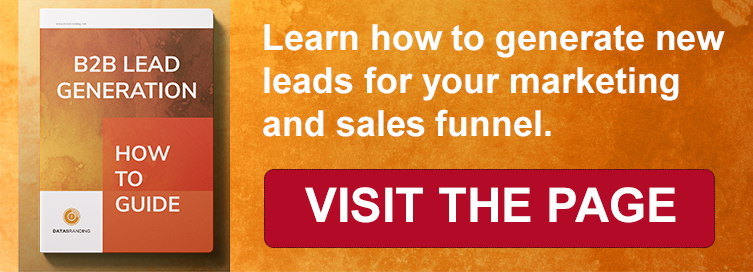 Every industry needs its own marketing and sales strategy.It's not the same to market and sell a life insurance than a lipstick. Your target audience is different, the channels each segment uses are different, even the schedules at which these people are exposed to your messages are different. This is why even though we make use of one same tool (Internet, for digital sales and marketing)the strategy must be adapted to each industry.
Every industry needs its own marketing and sales strategy.It's not the same to market and sell a life insurance than a lipstick. Your target audience is different, the channels each segment uses are different, even the schedules at which these people are exposed to your messages are different. This is why even though we make use of one same tool (Internet, for digital sales and marketing)the strategy must be adapted to each industry.How Can a Digital Marketing and Sales Strategy be Adapted to the Beauty Industry?
Attraction Marketing (or Inbound Marketing) can only be done online. It brings two great main benefits (to which we could add several other particular benefits that we won't mention for now). We'll here discuss these two main benefits using specific examples for the beauty industry.
You are there for those who are indeed your potential clients
Your potential customers look online for what you have and you are there for them with your content, with your information. This means that, from the outset, you're already reaching your target audience, without having to spend resources on those who aren't. In addition, you can customize the contents of your site to better suit the different buyer profiles that you know you'll have. For example:
- If it's a girl who is learning how to put makeup on, she'll look for tutorials on how to do it. You will then on your site offer blogs with tutorials on how to put makeup on and in these blogs, you'll add a click-on button so she receives more useful material for her (say a video about night makeup trends, for example). This action will take her to a fill-in form in which she'll leave her contact information to later receive an email with this content or material that we'll call premium.
- If it's a housewife who is interested in a lipstick and is looking for it online, your site will offer a blog with information about lipsticks. In this blog post, you'll also offer to email her your digital lipsticks catalog in exchange for her contact information.
- If it's a styling and hairdressing student, he'll probably look for training courses or beauty products for salons and beauty schools. Your site must offer the content that his segment requires, for example, a blog about styling which also offers (with a click-on button that leads to a contact form) more information about training courses or products that you offer for schools. As in the previous cases, this premium information will be sent to his email address once he shared his contact information with you.
This is how:
- Your site will indeed offer what each client needs, you'll be the answer they were looking for
- You'll start a relationship of communication and trust with your potential clients
- Your potential clients will be given a customized follow-up, one that meets their own worries and interests
- Your resources will be invested on those clients who are actually looking for what you have, os opposed to traditional marketing in which you'd invest resources to offer your product to a non-segmented, general audience.
In short, you'll build a segmented client database that will allow you to take future personalized marketing and sales actions
Your contacts will self-segment themselves when filling in the forms (to continue receiving your premium content) since they'll fill-in fields such as: "I identify myself with: a) Housewife b) Student c) Interested in tutorials" (as well as any other options you'd like to add to the list). They'll be registered in your CRM under their own segment so you can:
- Carry out future personalized campaigns by segment. For example, sending an email to the "housewives" segment with the offer that you've prepared specially for them: buy a lipstick, blush and concealer, and we'll give you a foundation brush for free. Or email the "student" segment an e-brochure of the makeup course that your company is about to give.
- Give automated follow-up to each of your clients. You can automate steps to follow for each kind of client. For example, you can program that if an "interested in tutorials" client downloads a video about bridal makeup, an email that offers a second tutorial on bridal makeup gets sent to him as well (with a button that says: "click here to buy our bridal makeup kit with a discount)
Ecommerce
We must also mention that having a website allows you to not only carry out an inbound marketing strategy, but also, to have a virtual store or ecommerce. With this virtual store, you can sell your products 24/7. You'll offer your online catalog so clients can see each product, its features and prices and, if they feel like buying it, they'll be offered the option to buy the product right there, online. The product will be then sent to them via parcel and there you go! The sale is made.
Results
So... this is how by:
- Creating specialized content of your industry
- Offering this content on your website so that all kinds of potential clients that your company may have, find it when searching online
you'll be carrying out an Attraction or Inbound Marketing, a focused and personalized marketing that allows you to invest your resources (material and human) in those people who are indeed your potential customers. You'll exponentially increase your company's sales since if your content is ranked by search engines as good quality content, it'll be increasingly exposed to a greater number of people.
There are different ways to optimize your content so that it's effectively found by search engines (such as Google) and therefore, offered to a greater number of people. It is what is known as SEO.
Yes, there's a lot to do, which is why we recommend you ask for experts advice so you don't waste any more resources in a learning curve. At an Inbound Marketing agency, you should be able to ask for any of the following services:
- A single "getting started" consultancy
- The design of your whole strategy, according to your company's sales plan
- Training of your marketing and sales teams so they carry out the strategy themselves
- Work together (both your company and the agency) along the whole strategy
Want to know more about how to make a digital strategy?

 Paulina Romero H
Paulina Romero H